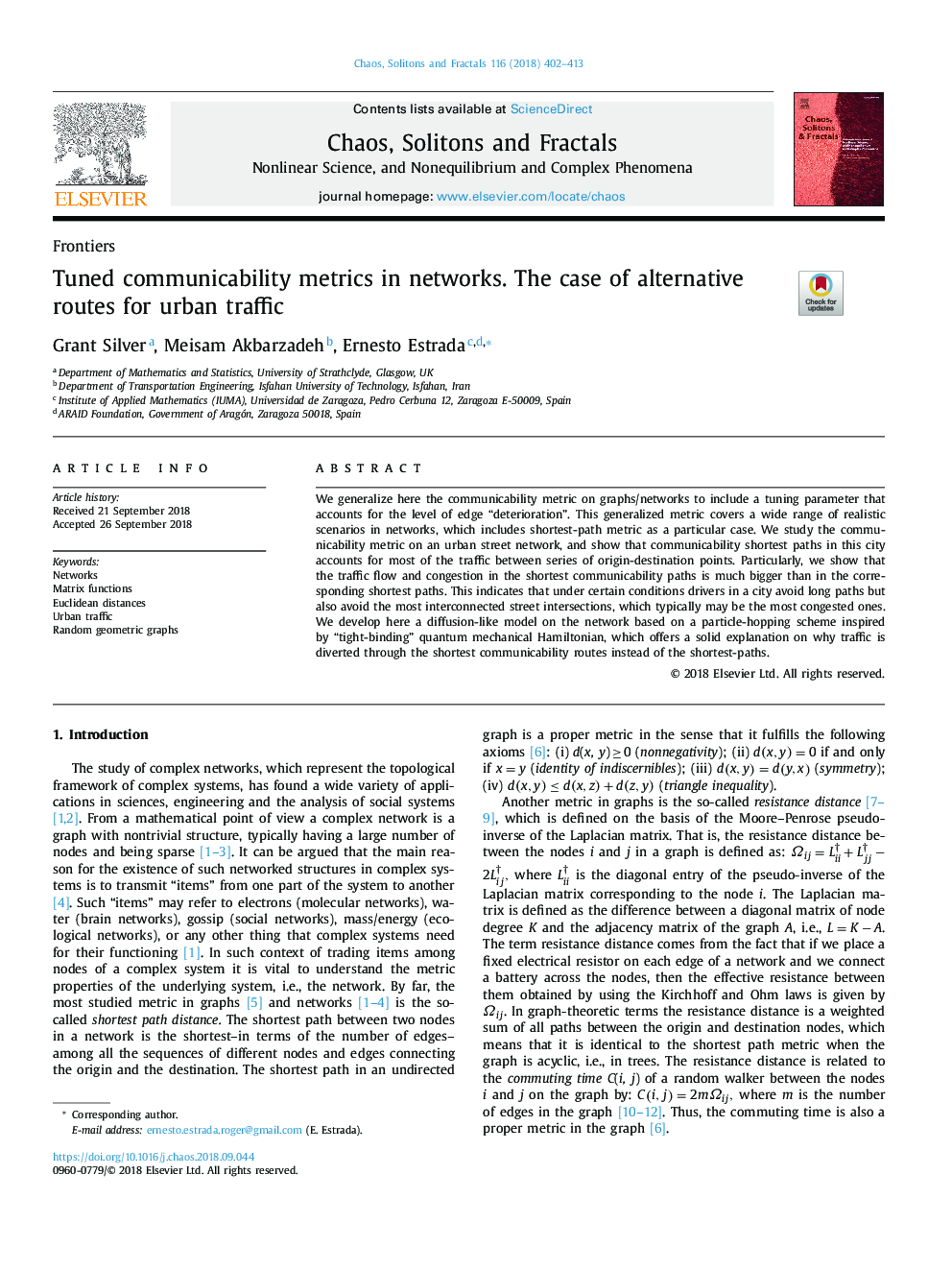| Article ID | Journal | Published Year | Pages | File Type |
|---|---|---|---|---|
| 11026237 | Chaos, Solitons & Fractals | 2018 | 12 Pages |
Abstract
We generalize here the communicability metric on graphs/networks to include a tuning parameter that accounts for the level of edge “deterioration”. This generalized metric covers a wide range of realistic scenarios in networks, which includes shortest-path metric as a particular case. We study the communicability metric on an urban street network, and show that communicability shortest paths in this city accounts for most of the traffic between series of origin-destination points. Particularly, we show that the traffic flow and congestion in the shortest communicability paths is much bigger than in the corresponding shortest paths. This indicates that under certain conditions drivers in a city avoid long paths but also avoid the most interconnected street intersections, which typically may be the most congested ones. We develop here a diffusion-like model on the network based on a particle-hopping scheme inspired by “tight-binding” quantum mechanical Hamiltonian, which offers a solid explanation on why traffic is diverted through the shortest communicability routes instead of the shortest-paths.
Related Topics
Physical Sciences and Engineering
Physics and Astronomy
Statistical and Nonlinear Physics
Authors
Grant Silver, Meisam Akbarzadeh, Ernesto Estrada,
